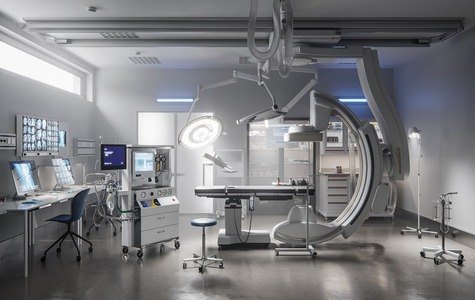- Medical Devices
- Wednesday, 12 Apr 2023
Trauma Fixation Device Market Global Forecasts and Key Regions Analysis 2028
Trauma Fixation Device Market: Key Insights
The trauma fixation device market is growing due to several key factors, including the increasing incidence of traumatic injuries, the aging population, and advances in medical technology. With the aging population, the incidence of osteoporosis and related fractures is increasing, which is driving demand for trauma fixation devices. Additionally, advances in medical technology, such as the development of new materials and coatings, are also contributing to the growth of the market. These advancements have led to the development of more effective and efficient trauma fixation devices, which are helping to improve patient outcomes and decrease the risk of complications.
Another key driver of the trauma fixation device market is the increasing demand for minimally invasive surgical techniques. Minimally invasive surgeries, such as arthroscopy and endoscopy, offer several benefits over traditional open surgery, including faster recovery times, reduced risk of complications, and improved cosmetic outcomes. The increasing adoption of minimally invasive surgical techniques is driving demand for smaller and more flexible trauma fixation devices, which can be used in these procedures. Additionally, the growth of the orthopedic device market is also driving the trauma fixation device market, as the use of these devices is becoming increasingly common in orthopedic surgeries.
To get free sample copy of the report, along with the TOC, Statistics, and Tables please visit @ https://www.theinsightpartners.com/sample/TIPRE00003828
Rising Population of Geriatric People to Drive Trauma Fixation Device Market
Aging people is one of the key drivers of growth in the trauma fixation device market. As people age, the incidence of osteoporosis and related fractures is increasing, driving demand for trauma fixation devices. Geriatric patients are more susceptible to fractures and other traumatic injuries and often require more extensive treatment and long periods of rehabilitation. As a result, the growing population of geriatric patients is helping to drive the growth of the trauma fixation device market.
In addition to the aging population, the growth of the trauma fixation device market is also driven by advances in medical technology and the increasing demand for minimally invasive surgical techniques. Advancements in medical technology have led to the innovation of more effective and efficient trauma fixation devices, which are helping to improve patient outcomes and reduce the risk of complications. Additionally, the increasing demand for minimally invasive surgical techniques is driving demand for smaller and more flexible trauma fixation devices, which can be used in these procedures. The combination of these factors is helping to drive the growth of the trauma fixation device market.
Trauma Fixation Device Market: Segmental Overview
The global trauma fixation devices market is segmented on the basis product, material, surgical site, and end user. Based on product, the market is segmented into internal fixators, external fixators, and others. Internal fixators segment is further subsegmented into plates, screws, nails, and others. External fixators segment is further subsegmented into unilateral and bilateral, circular, and hybrid. Based on material, the market is segmented into stainless steel, titanium, and others. Based on the surgical site, the trauma fixation devices market is bifurcated into lower extremities and upper extremities. Lower extremities segment is further subsegmented into hip and pelvic, lower leg, knee, foot & ankle, and thigh. Upper extremities segment is further subsegmented hand & wrist, shoulder, elbow, and arm. Based on end user, the trauma fixation devices market is segmented into hospitals, ambulatory surgical centers, orthopedic centers, and others.
Based on product, the internal fixation devices segment held the substantial share of the global trauma fixation device market. Internal fixation allows shorter hospital stays, enables patients to return to function earlier, and reduces the incidence of nonunion (improper healing) and malunion (healing in improper position) of broken bones. The implants used for internal fixation are made from stainless steel and titanium, which are durable and strong.
Trauma Fixation Device Market: Competitive Landscape and Key Developments
Stryker Corporation, DePuy Synthes, Zimmer Holdings Inc, Smith & Nephew plc, Zimmer Biomet Inc, Wright Medical Inc, Medartis, Globus Medical Inc, B. Braun Melsungen AG, and Orthopaedic Implant Company are among the key players operating in the trauma fixation device market. These companies have a widespread presence worldwide, which provides lucrative opportunities to serve many customers and expand the trauma fixation device market.
Contact Us
Contact Us: The Insight Partners
Phone: +1-646-491-9876
Email Id: sales@theinsightpartners.com
Related Industry Updates
Surgical Staplers Market - Important Changes in Industry Dynamics
Apr 22, 2021
Europe Microtome Market Forecast to 2027 - Covid-19 Impact and Global Analysis - By Product (Microtome Instruments,Rotary Microtomes,Cryostat Microtomes,Vibrating Microtomes,Other Microtome Instruments,Microtome Accessories); By End User (Hospitals,Clinical Laboratories,Other End Users) and Geography
Apr 14, 2021
Hair Transplant Market, By Segmentations, Key Company Profiles & Demand Forecasts to 2020 – 2025
Jan 05, 2021
North America Adult Diapers Market Research Revealing the Growth Rate and Business Opportunities to 2027
Jan 09, 2021
Asia Pacific Sleep Apnea Devices Market Foraying into Emerging Economies 2027| Koninklijke Philips N.V., Devilbiss Healthcare LLC., RedMed, Compumedics Limited
Aug 20, 2020
Continuous Positive Airway Pressure (CPAP) Devices Market Trends, Developments In Manufacturing Technology And Regional Growth Overview 2027
Jul 02, 2020
MENA Knee Cartilage Repair Market is expected to reach US$ 79,443.64 thousand by 2028
Aug 04, 2023
